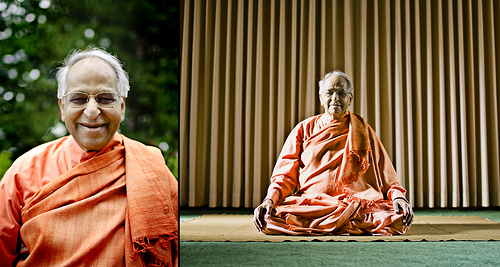
Two Paths in Yoga
There are many misunderstandings about yoga. There are many paths in yoga and different yogis choose different paths. Here we shall speak only of two paths to clear up some misunderstandings. There is a common perception that all yogis are glowing with health and youthfulness. Sometimes we hear questions like: If he is a yogi why does he wear eye glasses? We shall explain a little.
Ramakrishna Paramahamsa died of cancer. Swami Vivekananda died of diabetes. Paramahamsa Yogananda died of heart attack – so we hear. But we do not doubt their achievements in yoga.
Here, there are two paths. The path of dhyana-yogis and the path of hatha-yogis. The hatha-yoga practices that grant youthfulness and glow of health are time consuming. The dhyana-yogis do basic hatha just to enable the body to sit in meditation. They prefer then to spend more time in the internal meditative practices to achieve the goals of the realization of eternity and moksha.
Even the practices of dhyana-yogis and hatha-yogis differ on many grounds. For example, hatha-yogis teach kumbhaka, retention of breath. The genuine dhyana-yogis, both of the Himalayan tradition of yogis and of the Buddhist orders, teach awareness of the soft and suavely flowing breath and related practices. These latter prefer to perfect kevala-kumbhaka, which is when the breath becomes so subtle that it goes into akasha-tattva, the ‘space’—element. This can be understood only experientially. Very few know these practices and have mastered them.
Then among the dhyana-yogis (and jnana-yogis), there are those who sit in the solitude of caves (if any caves are left by now!) and monastic cells of solitude. They do not take many disciples, and remain absorbed in their contemplative practices.
Then there are those who have chosen, or have been ordered by their guru, to serve and teach widely out there in the world. They travel around the world, meet and guide thousands of people and manage to find time only for their spiritual practices, besides giving the necessary attention to guiding and helping others, not to mention often undertaking massive charity projects. In such a life, because these demands on their time are so heavy, there is no time for these guides of dhyana-yoga and jnana-yoga for their own physical well being.
So, with the few minutes or few hours jealously saved, one can either go into meditation or do eye exercises to take off the glasses!
Then, is there no physical benefit to the path of meditation? That would also be erroneous.
First of all, these dhyana-yogis dwell in the inner world of the mind from where they derive endless flow of inner knowledge which they continue to share.
Secondly, such yogis do not make body conditions into mind conditions and their spiritual practices give them the ability to endure even when, in the course of service, their bodies collapse. They have served the mission of their guru lineage and die in satisfaction and inner peace.
Third is the greatest benefit to the body. The practices of meditation awaken their prana bodies and it is the prana that gives them the inner strength to continue to serve far beyond the capacity of ordinary people.
Here I will give a personal example.
I started full-time traveling and lecturing, domestic and international, in 1946. It has been non-stop for 68 years of my current 81 years.
For many decades those serving close to me have seen me often at the verge of collapse and suggested I cancel appointments, travel or lectures. I go through special and subtle internal prana-revival practices, not known to hatha-yogis. Half an hour after those practices and deep meditation, the same people are surprised to see me give my lectures, teachings and appointments with full force.
Have you ever heard of a case where a person with six heart arteries 100% blocked for a number of years has done several round the world lecture tours? That is my case, by the power of dhyana-yoga.
So, the path of dhyana-yoga is not totally useless in the body’s care!




